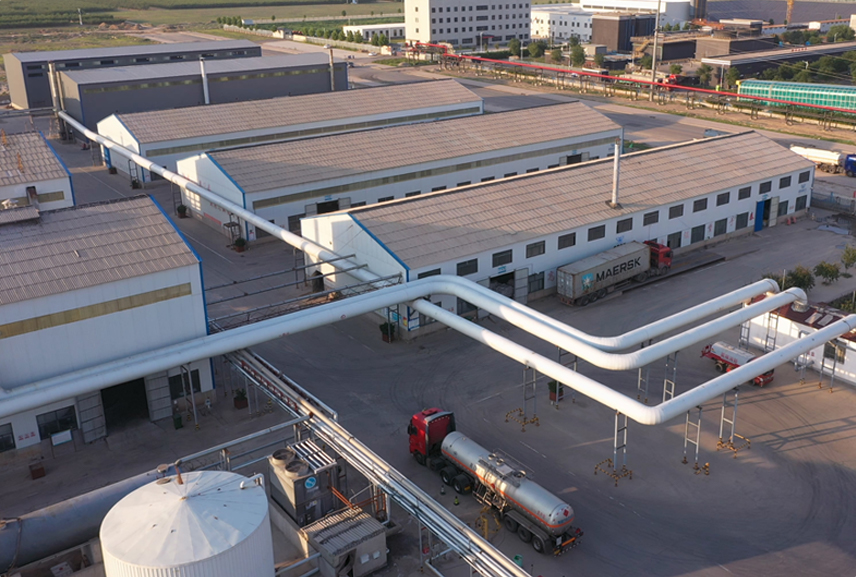Bonding mortar is made of cement, quartz sand, polymer binder and various additives through mechanical mixing. It is mainly used as an adhesive for bonding insulation boards, also known as polymer bonding mortar.
Product Details
HPMC's role in bonding mortar mainly includes thickening, water retention, bonding and film formation. HPMC, or hydroxypropyl methylcellulose, is a polymer compound widely used in the building materials industry and plays an important role in bonding mortar. Specifically, the role of HPMC includes:
Thickening effect: HPMC has a long molecular chain and can form a three-dimensional network structure in water, thereby increasing the viscosity of the mortar. This helps to improve the working performance of the mortar, making it more convenient in transportation and construction, while effectively preventing water evaporation.
Water retention effect: HPMC has excellent water retention properties and can effectively delay the setting time of the mortar. This helps prevent shrinkage cracks in the mortar during transportation and construction and improves the durability of the mortar.
Bonding effect: HPMC has a good bonding effect and can improve the bonding between the mortar and the base layer. This helps prevent the mortar from falling off during construction and improves the adhesion of the mortar.
Film-forming effect: The film formed by HPMC has good toughness and durability, which can improve the waterproof performance and durability of the mortar.
In summary, HPMC significantly improves the performance of the bonding mortar through its unique physical and chemical properties, and improves the construction effect and durability of the material.
Standard
| Item | Unit | Standard Specifications |
| Appearance | / | White powder,free flowing |
| Loss on drying | % | 4-6 |
| Residue | % | 3.5 |
| Methyl | % | 49-26 |
| Hydroxypropyl | % | 7-14 |
| Ph value(25C) | / | 6-8.5(neutral) |
| Gel temperature | ℃ | 60 degree/75 degree |
| degree of fineness | mesh | 100 mesh,>96%80 mesh,>100% |
| Apparent density | g/m3 | 0.4-0.6 |
| proportion | g/L | 420-520 |
| Surface Tension(2%solution) | dyn/cm | 42-56 |
| Water retention | % | ≥92 |
| Light Transmittance | % | 65-90 |
| Carbonization temperature | ℃ | 280-300 |
| Discoloration temperature | ℃ | 190-200 |
Packaging and Shipping
Packaging and storage: 25 kg/bag
FAQ
Regarding the relationship between viscosity and temperature in HPMC (HPMC viscosity), what should be noted in practical applications?
What are the differences between HPMC and MC?
What are the formulations for interior and exterior wall putty powder?
What is the application of HPMC in putty powder, and what causes the formation of bubbles in putty powder?

Related Products

Get in Touch
Interested in how our HPMC can enhance your personal care formulations? Contact us to request a free sample and experience the superior quality of our cellulose ether products.
Related News and Blogs
24
Aug., 2024
Let's meet Indonesia Coatings Exhibition 2024
The 10th Paintistanbul & Turkcoat Fair will be held at the Istanbul Exhibition Center in Turkey from May 8th...
19
Nov., 2021
What Causes A Cracked Putty Layer?
The one-off scraping thickness of the putty is directly proportional to the curing shrinkage strength, which increases in proportion to the tendency of the putty to crack.
04
Nov., 2021
Whether you are carrying out small repairs or building walls, knowing how to mix the mortar needs to be precise. If the mortar is too dry, the blocks will not stick together properly. If it is too wet, flowing mortar can spill out of the joints, resulting in wasted time and materials for clean-up.
25
Oct., 2021
The Effect of Winter Construction Temperature on Tile Adhesives
As we all know, tile adhesive is generally made from cement and mixed with various additives. It is mixed with water at the construction site and then applied to the wall or floor.

Get in Touch
Interested in how our HPMC can enhance your personal care formulations? Contact us to request a free sample and experience the superior quality of our cellulose ether products.